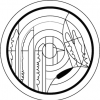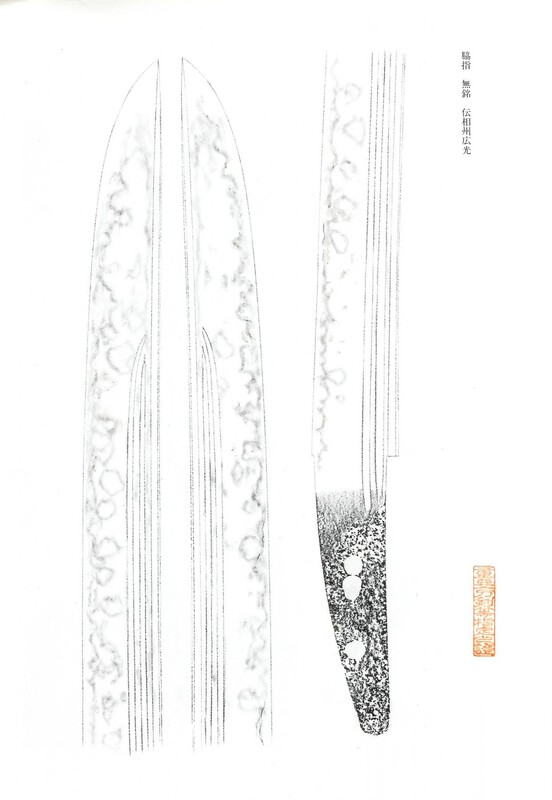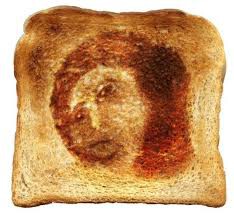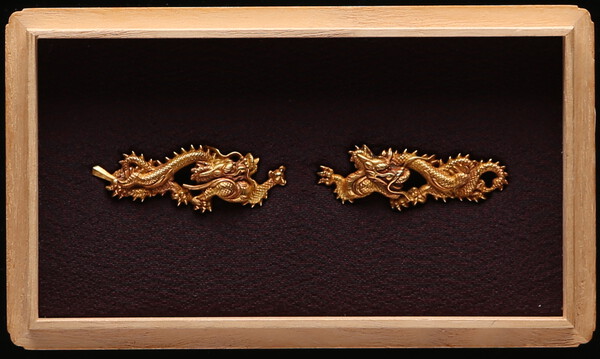-
Posts
995 -
Joined
-
Last visited
-
Days Won
12
Content Type
Profiles
Forums
Events
Store
Downloads
Gallery
Everything posted by Ted Tenold
-
On an older sword, what could appear as ububa may be just an artifact of the entire hasaki having been reset as a matter of correction of curvature, and/or removal of chips. You have to look at the sugata of the sword as a whole, the relationship of the yakiba width and shape in relation to it, as well as the togidamari to make any fundamental determination of ububa in a blade older than about Shinto period. I would not say that ububa cannot be seen in Koto period swords, but just because the edge is unsharpened from the hamachi forward, does not mean it is actually ububa, from the time the sword was forged.
-
By and large, as mentioned before, the most common reason is continued suriage of a blade during it's existence. As koshirae styles changed, so also did the variance of step back placement required for the ana. The thickness of the tsuba, seppa, number of seppa, and the depth of the fuchi all have an effect on where the ana will eventually lay out in a tsuka. Habaki also play into this because the "nomikomi" (notch at the munemachi) on some are very deep, while others (i.e. some tachi habaki) have no nomikomi at all. Habaki were also subject to stylistic changes through time. Looking at a Soshu wakizashi and tanto which have such a stubby nakago with lots of taper, these considerations are demonstrated in the number of ana placed all along the length of an otherwise ubu nakago. The tolerances are much more confined. If the fittings/koshirae extended further from the munemachi to take up more length of the nakago, the result would be very little of the nakago actually inside the foundation of the tsuka, thus the motives behind machiokuri of them also becomes more clear; to extend more steel into the tsuka. Some swords may also have had more than one koshirae for different requirement of wear or purpose, and taking into account the above, could also be a reason for additional ana installation.
-
Every dollar, or [insert currency of domain here], someone spends on a fake or otherwise highly questionable sword, is that much more money they are *away* from acquiring something genuine, educational, and truly enjoyable. But it's also a bit more deleterious than this; it also takes them farther away from being able to acquire better swords in the future as they progress, because at the heart of it, who will want to take a trade in of lead toward silver? And, how much effort will it take to sell lead to go buy the silver? So buying fakes is like starting over every time, with less than you had before. Three steps forward, four back, and the only thing learned is how to walk backward better than forward. It is not just the responsibility of just the buyer, or just the dealer. Yes, people should educate themselves to know what they're buying, but it should be a symbiotic relationship, and a truly honest dealer will try to guide their clientele though the jungle rather than just sketch a crude map on a cocktail napkin and push them in. The client also has be be willing to invest in their own experiences by effective effort to educate themselves beyond just asking for the answers all the time. In the spirit of keeping on topic for the OP; I have not seen every Okimasa of course, but this does not look like any of the Okimasa I have seen. Okimasa tend to run in the $8k USD range for a genuine work. So bells and whistles immediately ring in my head when I see one priced at $1000 dollars. While price alone is not the only criteria by which one should judge the validity of a piece, it is the first that determines what questions should follow. If the price is uncommonly low, then the first question is naturally "Why is it priced so low?" and the next 19 questions proceed from there.
-
KPS; so everything that every respected resource spanning several hundred years, and all the contemporary study upon which all that is based and developed, and every noted authority that has dedicated their lives either in whole or in large part to the scholarship of Nihonto... are wrong? Invalidated by your unilateral and independent interpretations of onion skin thin references of mekugi-ana placements and anomolous stroke order "codes" which only you can see and define, with perfectly pure understanding to share benevolently with others? This all sounds quite uncomfortably close to religion. Aren't you on the wrong forum? As for you're parting shot at Darcy; his intelligence, experience, and reputation are clearly evident and respected in the Nihonto community. If you knew him personally, you might yourself experience a little bit of that enlightenment that Confucius is trying so desperately to point you to.
-
There is no more formidable foe to forgers and fraudsters, than an educated buyer. As far as encountering an undiscovered treasure is concerned; "Luck favors the prepared".
-
The schedule of fees can also be seen on the American Branch website at; http://nbthk-ab.org/Shinsa_Fee_Schedule.html. Also the standards for judgement are the there also; http://nbthk-ab.org/Standards.html
-
David, As John wrote, the kanji is nonsense in context of Japanese swords. Even if it were coherent, it doesn't matter what it says if the workmanship isn't consistent, and this is a lesson that applies to actual Nihonto.
-
I am very sorry to hear this. He was a man of deep knowledge and many experiences. I am among the many people that will miss him. Thank you Michael for all you did. Enjoy exploring on your next journey!
-
Also, fyi; HInoki is different than HOnoki. Hinoki is a species of Cypress. HOnoki is a species of Magnolia. So be careful which term you use if asking a Japanese wood supplier. Japanese have selected specific types of wood for specific applications. I have not seen any species of pine used in tsuka foundations, though I have rarely seen a couple of other deciduous species. Honoki is used in saya and shirasaya for reasons of steel friendliness as well as lacquer friendliness as it is used as the foundations for lacquer wares also. Outside of Japan I have seen species of Poplar, Balsa, and Basswood used, all of which are very very soft. Bass is so soft it might dent if you just scowl at it. So compression with these could be a problem resulting in looseness and/or rattling developing. All are also more sensitive to environmental humidity changes than magnolia. Mike Virgadamo in Pasadena, California uses Alder which is a pretty fair substitute for Honoki, but not a perfect equivalent. It has a reddish/orangish brown color, but carves well, is fairly stable, and sword friendly. I have had many shirasaya and bukezaya made by him for swords and never had a problem with this wood.
-
Yes, indeed, and having the person willing and able to do it in Japan! :-)
-
Ah, that's good then. Knowing your collecting focus I figured it was such so mentioned it for you, as well as others as it's become a more common question with the increased submissions of showa period gendai over the years. I've recommended to folks buying Gendai that are in Japan already, to have them submitted before sending overseas if having a paper is important to them. They'll pay much less than sending it back to Japan later, and may wait much less time for the turn around also.
-
Joe, As of this year, the NBTHK no longer upgrades the old koshu or marutoku papers. It must be resubmitted for Hozon, and have (or have passed) Hozon to achieve Tokubetsu Hozon. Items can still be submitted for both concurrently in the same shinsa session. Also know that importation of Gendaito into Japan is a bit more complicated because they are not "antiques" (more than 100 years old like the vast majority of other swords that are imported. They are therefore also subject to a value based duty upon importation.
-
The attribution of Muramasa is the sizzle that sells the steak, true. That said, the work looks quite good and I personally like it for that, though not enough to pay over 4 million yen for it. Consider also that a nice zaimei daito by Muramasa would be a multiple of the current price. Daito by Muramasa are quite rare in any state. Muramasa is also a Saijo saku maker which also pretty rarified air. If I recall correctly a Juyo zaimei sold for over $100k+ not long ago. So the fact that they were regularly altered does indeed diminish their achievable tier of paper when mumei, but also propels the zaimei ones to higher prices because a zaimei Muramasa is more desirable among the entire body of Muramasa works, which in turn, must be compared to each other in terms of overall blade health and condition regardless of mei or lack thereof. The Hozon authentication of it as a Muramasa becomes the flying buttress for it's desirability and a Tokubetsu Hozon paper wouldn't bring a great deal more to the party in my opinion. If it were Tokubetsu Hozon (meaning zaimei) then the question would be "will it go Juyo?" and now it becomes a deeper question of condition of the blade. So is a zaimei sword of weaker condition that is Tokuho worth more than a nicer condition mumei? I think this is where equilibrium manifests itself between them and where we see the break in the belief that paper level leads to price level, and demonstrates that while papers can add value, they also don't act as a singular force that drives pricing or defines rarity or quality in absolute terms. Also consider that there is an element of mystique to a "muramasa" and comparable examples of similar emotional draw can be found in just about every other gendre of collecting. It's the intangible, subjective, emotional element that is the romance of collecting, and carries with it a price multiplier that is individual to each individual collector. Auctions are the perfect environment for eliciting those innate price multipliers.
-

Help With A Sosho Mei Reading Please?
Ted Tenold replied to Ted Tenold's topic in Translation Assistance
Thank you gentlemen! Much appreciated. -
-
It should be remembered that the gokaden were established in an effort to categorize a large variety of work into neat little boxes. Even within the Gokaden, there are some grey areas. Bugatti being classified as a French car is a good example. Bugatti was Italian born and moved to a German city before World War I. After the war the German city became a French city. Now Buggati is owned by Volkswagen. So is it Italian? Is it German? Is it French? Well, yes, no, and yes and no. So for a French car, why not a nice little deux chavet? Pretty classic French if you can keep it running. My point without straying off topic too far here, is there are many "exceptional exceptions" that don't quite fit exactly into those boxes that some really nice swords might not make it into a collectors radar if too much focus is placed on generalizations. Furthermore the classifications become even more blurred once we reach Shinto and later. So the gokaden becomes a great method of introduction to swords so one can become familiar and develop an understanding of one's personal tastes, then focus on what they like in a sword. How that fits within a strictly "gokaden" format will vary and becomes less important in my opinion. Volvo? German? Anybody who is worked on a Swedish car knows that Germans invented over engineering and Swedes perfected it.
-
Here's a short video of the tanto lecture at the SFTK last month. Studying excellent works in hand is the only way to really appreciate and begin to understand this remarkable art form. If you've never been to a show, or to a lecture such as this one, then you're missing out on the best way to expand your knowledge and understanding of Nihonto. Get off Ebay. Get to a show.
-
Hi John, Not Goto. They are Hozon papered to Ko-Kinko actually.
-
-
Hey Joe, I hope you are well! I actually do the photography for Darcy now, and have for a couple of years. He's mentored me and we work in tandem for these results. To paraphrase a comment he made once is that i swing the big hammer while he swings the smaller one. We work very hard to constantly improve our results, and he's given me a deeper appreciation of photography at large. I am very grateful to him. As for the Masatsugu, it's a brilliant sword. It was on display at the SFTK and more than a couple people were very surprised that a Shinshinto sword could have some much work like this. Pretty clear testimony to Masatsugu's roots and skills. He is rated Josaku, but this looks more like a Jojosaku production to me.
-
Have a look at this one: http://www.nihonto.ca/suishinshi-masatsugu/
-
A little bit of a toss up for me. I think Kencho is a good call, but I'll say Bizen Nagamori.
-

Why Do People Pay More At Auctions?
Ted Tenold replied to lonely panet's topic in General Nihonto Related Discussion
Depends on the auction really. The higher the quality of items and the more notable the auction house, the more likely the attendance will be more educated in that particular gendre, but ingnorance does often transcend all level of financial well being. I went to a little local auction here this very morning on the rumor there was a katana in it which is very rare occurrence in a place where old horse tack, boxes of depression glass, and oak furniture fill the lots. Got to the viewing early and found it was a very typically bad chinese repro gunto. You know, big garrish hada, bad carving of a name on the blade, serial numbers stamped on the habaki... a solid list of fails. Since I already have plenty of stakes for my tomato plants, I diverted my attention to the tool section where a lovely little power miter saw called out to me. The sword came up to auction before the saw so I watched with fascination as four bidders in the room drove the price of this POS SLO (sword like object) up to $425.00. Un be lieveable... The new owner had an ear to ear smile on his face as the room applauded the fall of the hammer, and somewhere in a galaxy far far away, Obiwan felt a great disturbance in the force. So my answer to the OP's question is that the main reason people overbid is pure ignorance, with a generous helping of foolish pride. And the miter saw? All shiny and near new, it came home with me for the low low price of only $40. I had my eye on a black velvet Elvis painting too, but life really is about choices.. :-) -
The NBTHK American Branch presented two lectures; Kodogu on Friday, and Tanto on Saturday. While I did not get images of the Kodogu display, I did of the Tanto display. Here is a shot of the line up, and the stars of the show; Awataguchi Kuniyoshi, zaimei Awataguchi Yoshimitsu, zaimei Yamato Hosho, mumei Rai Kunitoshi, zaimei and dated Samonji, mumei Sa Yukihiro, mumei Etchu Norishige, zaimei, dated Osafune Kanemitsu, zaimei, dated Tegai Kanekiyo, zaimei Osafune Yasumitsu, mumei Kaga Kiyomitsu, zaimei, with koshirae Kanemoto, zaimei The American Branch often allows non-members to attend the lectures for a nominal fee. This display/lecture was only for members for reasons of expediency to allow for the most time possible for study and to accommodate for a subsequent American Branch general meeting. However, on hearing the swords that would be available for study, at least one person enthusiastically joined at the door and he was not disappointed. This line up of Tanto was a stunning opportunity to see some of the finest examples of tanto inside or outside of Japan. The Officers, Directors, and entire body of the Membership wish to express their sincerest gratitude to those owners that so generously allowed us to study these superlative blades.








